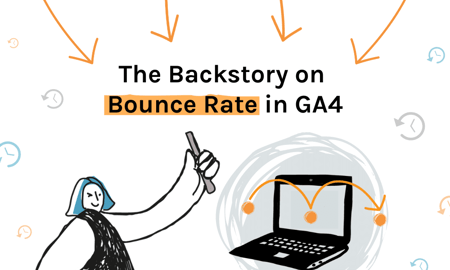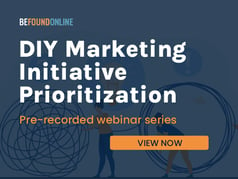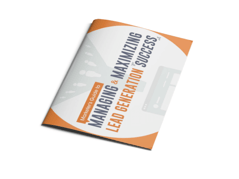
Death, Rebirth, and the Rise of Engaged Sessions
As we enter 2023, Google Analytics users now have less than six months remaining to migrate to Google Analytics 4 (GA4) before Universal Analytics (UA) sunsets on July 1st. At BFO, we’ve been working with clients on their migrations for months, and are excited about this new era of marketing analytics. While GA4 is an exciting new tool, it comes with numerous challenges. Seasoned UA users may find themselves frustrated as they learn GA4’s nuances, and will face a challenge as they shift the way they look at their web analytics through a new GA4 lens.
One guiding principle we’ve shared with our clients as they learn GA4 is to look at it as a completely new tool. GA4 should be viewed as a powerful new version of Google Analytics built for today’s web, and not an update to Universal Analytics. After all, the modern web is much different than in 2012, when UA was first introduced. Today’s web is dominated by single page website applications, mobile apps, and different eCommerce platforms; all vital parts of your user’s journey.
Here at BFO, we’ve decided to kick off 2023 with a series of posts about some of the big changes in GA4. Our hope is that these posts will help readers understand the reasons for changes in the analytics interface from UA to GA4, and guide them in understanding how to use it.
We’ll begin with a hot topic: Bounce Rate.
Understanding Bounce Rate
Fifteen years ago, Google’s own Avainash Kaushik described Bounce Rate as possibly the best metric to look at when optimizing conversion rates. In Universal Analytics, a bounced session was one where a user briefly visited a page, made no interaction with your site, and left. For a long time, bounce rate was used as a measure of the quality of content on an SEO-optimized website. The idea was, if your site has great content, then you will have a low bounce rate because your quality content keeps the user engaged.
Over the years, user behavior changed online. Mobile applications, social media, and even the gradual decrease in user attention spans have had an impact on the Bounce Rate metric. So much so that in 2018, Google’s John Mueller stated that Google itself doesn’t look at Bounce Rate as a ranking factor. He described the way a user quickly navigates between pages as “pogo-sticking” from page to page.
While this description is certainly hilarious, there is some truth to it. Consider this scenario: you are searching Google for a new rug for your home. From the search engine result page, you open 3-4 sites in new tabs before you see a rug you absolutely love. You click that link and make a purchase, and never visit those first 3-4 tabs. Since those pages have loaded in their new tabs, they are marked as bounced sessions in Google Analytics. Is that a fair measure of the site’s content? The consensus amongst many marketers is that it’s not.
Bounce Rate in Google Analytics 4
For this reason, GA4 did not initially include Bounce Rate as one of its metrics. Google introduced “Engaged Sessions” which are defined as sessions that last longer than 10 seconds, have a Conversion event, or have 2 or more page views. This metric is intended to exclude the “pogo-stick” page views from engagement metrics and allow site owners to focus on the users who spend some amount of time on the page.
This was not received well by early users of GA4. In fact, the response was so negative that Google eventually caved and updated GA4 to include Bounce Rate. However, the metric has changed, and is now the inverse of the Engaged Session metric. Google’s own documentation explains it well:
| Metric | UA | GA4 |
| Bounce Rate |
Percentage of single page sessions in which there was no interaction with the page. A bounced session has a duration of 0 seconds. For example, if a user visits your website and reviews content on your homepage for several minutes, but leaves without clicking on any links or triggering any events being recorded as interaction events, then the session will count as a bounce. |
Percentage of sessions that were not engaged sessions. For example, if a user visits your website, reviews content on your homepage for less than 10 seconds, and then leaves without triggering any events or visiting any other pages or screens, then the session will count as a bounce. An engaged session is a session that lasts 10 seconds or longer, has 1 or more conversion events, or has 2 or more page or screen views. If a user doesn’t have an engaged session (that is, they don’t meet any of the criteria for an engaged session), then Google Analytics counts the session as a bounce. |
Bounce Rate or Engaged Sessions: What’s Better?
Ultimately, it’s up to you how you want to measure engagement in GA4. At BFO, we’ve encouraged clients to use Engagement Rate. Engagement Rate is the percentage of sessions that meet the qualifications of engaged sessions as mentioned above. We’ve found this new metric to favor positive engagement, whereas Bounce Rate is one of the few negative metrics found within any version of Google Analytics.
Engagement Rate also more accurately reflects users who are interested in your content and offerings. You can find it in a few default reports in the GA4 interface:
- In the Demographic Details report, found under Reports -> Demographics -> Demographic details.
- If you’ve linked Google Search Console, you can also find it under the Google Organic Search Traffic report.
Engagement metrics can also be enabled in GA4’s Explore tab to use in your own custom reports. When selecting metrics for your report, you can add Engaged sessions, Engaged sessions per user, and Engagement Rate to any report you create.
Tracking Site Engagement
Site owners should always aim for the highest engagement rate for their content. Start out by reviewing the Engagement Rate for your most important pages. Look for opportunities on pages with lower than expected rates. You can also compare pages with low engagement rates to ones with high engagement and see if you can identify what is causing rates to be lower.
Regardless of whether you use GA4’s new engagement metrics or stick with Bounce Rate, it’s important to understand the change in how these are measured, as well as why the change took place. If you wish to continue using bounce rate, you can customize your reports and do so. Just remember that the way engagement is measured in GA4 is different than it was in Universal Analytics.
Need Help with GA4?
Bounce Rate isn’t the only metric that has changed with the transition to GA4. If you are unsure if you have migrated your Universal Analytics to Google Analytics 4 properly or have questions about new GA4 features, reach out to the team at BFO. Our Analytics Department offers a host of services that are customizable to your business’s unique data needs.

Jon Phillips
Jon is the epitome of what we look for in a good analyst: he loves solving problems and he has a knack for catching things that others overlook. In addition to his problem-solving prowess, Jon loves exploration and experimentation within his major hobbies of music, cooking and travel. He is a curious guy and his passion drives him to succeed in what he sets his mind to.
CATEGORIES
SUBSCRIBE TO OUR BLOG
Stay up to date with the latest industry best practices in digital marketing!























.png?width=339&height=179&name=Webinar%20Banner%20(1).png)



.png?width=339&height=179&name=July%20Webinar%20(Newsletter).png)

.png?width=339&height=179&name=Webinar%20Banner-April-02%20(1).png)
%20(4).png?width=339&height=179&name=Webinar%20Banner-May-02%20(1)%20(4).png)




.png?width=339&height=179&name=March%202023%20Webinar%20Ad%20(autoresponder).png)






























































